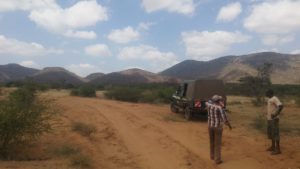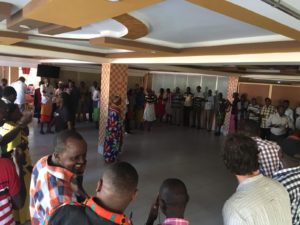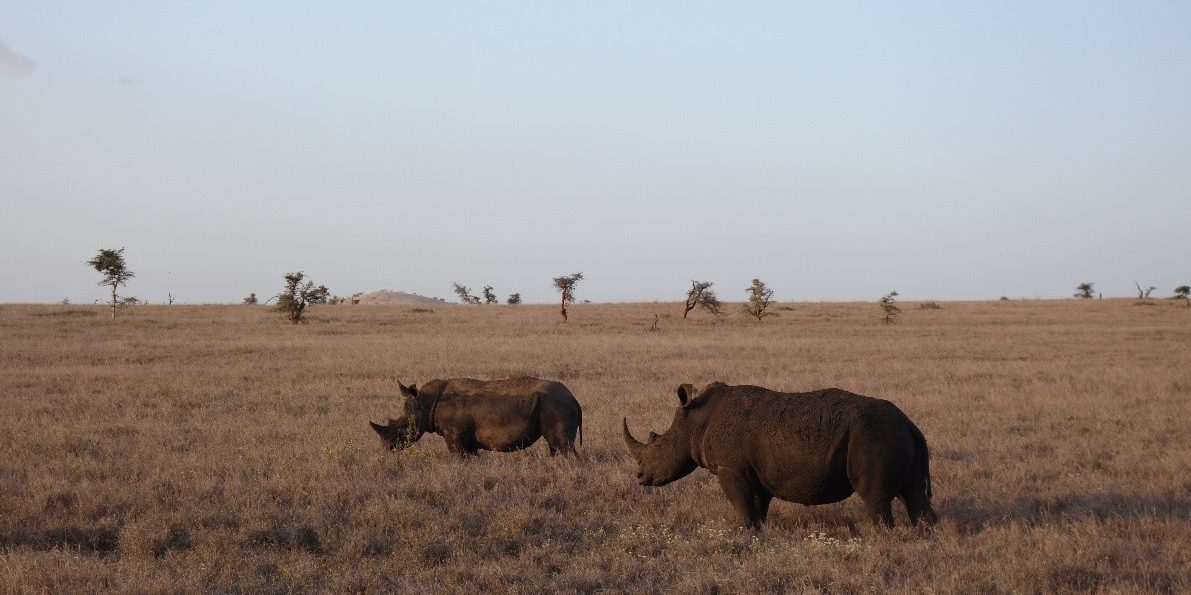22/01/2019 Northern Rangelands Trust HQ, Lewa
It’s just not possible in a 3 day visit to get to grips with the scale of the Northern Rangelands Trust, which comprises 35 member conservancies covering 42,000 square kilometres, let alone in a short blog post. The team here at NRT HQ in Lewa Wildilife Conservancy have been incredibly generous hosts though, and have made sure that our short time has been filled with as much as we can possibly take in.
Having read a bit about NRT’s extraordinary successes and inspiring history, I confess to feeling a little intimidated on our arrival. Flying north around the spectacular stratovolcano of Mt Kenya, over farms built on convoluted ridges of volcanic soil, I wondered what we could bring that NRT didn’t have already. The usual ‘imposter syndrome’ coupled with a sense that these guys really, really know their stuff.
Such feelings were quickly dispelled though, as we sat down with NRT’s executive group to explain why we are here, and to hear their thoughts on what a potential relationship with GSI could do for the community conservancies they support. One thing was immediately clear. There is an enormous appetite here to tell the stories of the interconnected impacts that community conservancies are having; securing peace in a previously volatile region, diversifying and increasing livelihoods in an extremely poor population, restoring degraded landscapes and building resilience against drought and overgrazing.

Managed grazing area in Kalama Conservancy
If we can contribute to understanding and quantifying those impacts better, NRT will be able to use that information in several ways. It can help to build trust with communities and show them that being involved really pays off. It can show funders that their support has had deep and long-lasting impacts. It can show governments that supporting communities to take ownership of the health of their landscapes can provide a sustainable pathway to materially improving people’s lives while promoting biodiversity. And it can help other people in other places to take a similar approach.
What is that approach? In a nutshell, rather than leave conservation to the national government, NGOs and wealthy private landowners, poor communities of traditional livestock herders are setting up conservancies of their own. The conservancies are run by a team of managers and rangers, all community members themselves, who answer to an elected board of decision makers representing a cross section of the communities within the conservancy area. This provides a mechanism for collectively managing grazing, monitoring wildlife and vegetation, deterring poaching and livestock theft, and developing wildlife tourism that brings income directly to the communities. NRT is the umbrella body that provides training, monitoring tools and financial support, and coordinates a rapid response team of rangers who can deploy in case of poaching threats and other conflicts. The management of NRT itself is answerable to a Board of Elders comprising members of each member conservancy.

At the root of the astonishing impact that this network has had is the community-led governance structure, which above all else has provided a mechanism for diffusing conflict between people of the 16 different ethnicities who live in the region. Traditionally, inter-tribal cattle theft and grazing incursions are common and with easily available illegal firearms violent conflict in the area has been a real problem. If you provide the conditions for peace, all sorts of other opportunities open up.
We’ve had a packed 3 days meeting communities, seeing an NRT training session, getting to grips with the monitoring programs and seeing first hand the regenerative power of good grazing management. The one thing I was utterly unprepared for, having read lots about badly degraded grazing land, was the incredible beauty and richness of the Lewa Conservacy where NRT have their headquarters. In two short drives after work we have seen more wildlife than I ever expected to see in my life, including the black rhino that Lewa was originally established to protect. I feel immensely privileged to be here. Lewa is where the whole thing started, and just goes to show what an enormous difference can be made by being open to new ideas and pursuing a vision.

